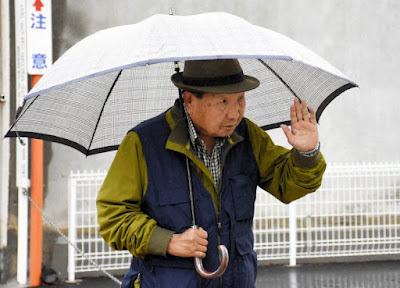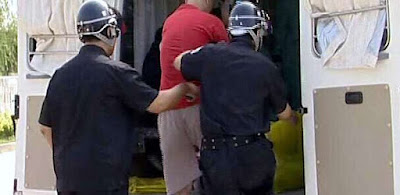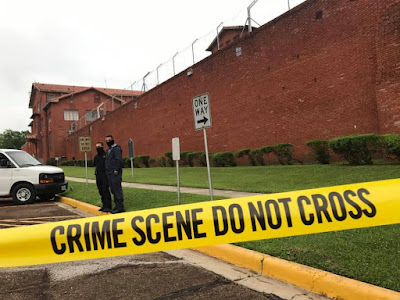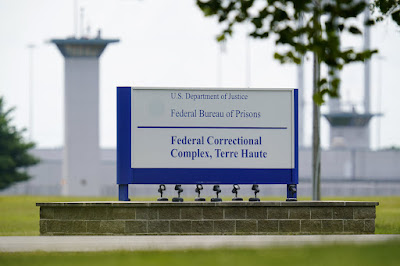Maryland's death row has moved.
Corrections officials say the state's five death row inmates were taken this week from Baltimore to western Maryland. They'll now be housed at the
North Branch Correctional Institution (left), a maximum-security prison in Cresaptown.
Death row had been located at the Maryland Correctional Adjustment Center, formerly known as Supermax, for more than 20 years. That prison is now used to house inmates in transit and awaiting court appearances.
The state's execution chamber remains in Baltimore.
Five men have been executed since Maryland reinstated the death penalty in 1978, most recently in 2005. The state has had a de facto moratorium on capital punishment since late 2006 because its lethal injection protocols are under review.
Source: Associated Press, June 25, 2010
Death row inmates transferred to W. Maryland
 Under cloak of secrecy, five condemned men are moved from Baltimore to Cumberland prison.
Under cloak of secrecy, five condemned men are moved from Baltimore to Cumberland prison.
The five men on Maryland's death row were quietly moved this week from the hulking Baltimore prison once known as Supermax to a Western Maryland facility hailed recently as one of the most technologically advanced maximum-security prisons in the United States.
The transfer to the
North Branch Correctional Institution (left) near Cumberland was carried out amid such secrecy that even now state prison officials won't give any details — not even which day the condemned men were moved.
"For security purposes, I'm not able to speak about that," said Mark Vernarelli, a spokesman for the Department of Public Safety and Correctional Services. "I myself don't even know when it happened; they wouldn't tell me."
Death penalty foes questioned the motivation behind moving the men to a rural part of the state, a step that had been planned for years. "I think it's somewhat symbolic that they put the death penalty out of people's minds," said Richard Dieter, executive director of the Death Penalty Information Center in Washington.
"Even though the fiction is you go to death row and get executed, the reality is that's where you spend your life in prison," said Dieter, whose group opposes capital punishment. "Death row is already a pretty isolated place to live. Then you take it out of the area where you're from, and it exacerbates the punishment."
The state's execution chamber will remain in Baltimore at the prison's Metropolitan Transition Center hospital. The state has executed five inmates since capital punishment was reinstated in 1978.
The move comes in an election year when capital punishment could emerge as an issue in the governor's race. Gov. Martin O'Malley, a Democrat, tried unsuccessfully to repeal Maryland's death penalty law but did win tighter restrictions on when it can be used. Two executions were carried out during the single gubernatorial term of his Republican predecessor and current challenger, Robert L. Ehrlich Jr.
Maryland's death penalty has been on hold since the Court of Appeals ruled in December 2006 that executions could not continue until a regulatory committee of the legislature adopted lethal injection protocols. That hasn't happened, creating a de facto moratorium on state executions.
Maryland has one of the smallest death rows of the 35 states that have capital punishment. Only South Dakota, Colorado, Montana, New Mexico, Wyoming and New Hampshire have fewer condemned inmates, according to the Death Penalty Information Center.
The death row relocation has been in the works since 2004. That year, Mary Ann Saar, then the public safety and corrections chief, said the state hoped to move death row inmates to Allegany County within two years. At the time, the North Branch Correctional Institute was being expanded. Vernarelli said he did not know why the move took years longer than once envisioned.
Since 2008, North Branch, which cost more than $175 million to build, has been a fully operational maximum-security prison harboring only long-term inmates. Unlike many prisons, which include various levels of security, it accepts only maximum-security prisoners. Five hundred cameras line the prison walls to deter violence or escape attempts.
Using an "inverse fortress" design, with cells ringing a command center, North Branch was the most technologically advanced maximum-security prison at the time of its construction, according to a 2005 episode of the television series "Megastructures" on the National Geographic Channel.
At North Branch, death row inmates are being housed in a separate wing and are segregated from other inmates. Meals are taken to their unit.
"It does point up how these 5 people are going to be given special — not preferable — treatment, tighter security," Dieter said. He noted that the 150 miles between Baltimore and North Branch will impose a burden on the families and lawyers of the condemned — a factor unlikely to garner sympathy among capital punishment supporters. 3 of the 5 death row inmates were convicted of crimes in Baltimore City and Baltimore County.
Vernarelli said state corrections chief Mike Stouffer spoke with Western Maryland's state legislative delegation before the move.
The recently vacated death row, which opened in the late 1980s, was in Supermax. Now known as the Maryland Correctional Adjustment Center, it is being converted to a temporary "housing hub" for state inmates in transit for court appearances or medical treatment in Baltimore. Also, the U.S. Marshals Service has contracted to use 240 beds for pretrial federal detainees.
A longtime death penalty opponent, O'Malley has said Maryland should abolish capital punishment because of flaws in the criminal justice system exposed in states around the country. He came up short in a bid to repeal the punishment during the 2009 General Assembly session.
The legislature met him part way, revising the law to require prosecutors to have DNA evidence, a video recording of the crime or a videotaped confession before filing capital murder charges. O'Malley accepted the restrictions as the best he could accomplish.
Ehrlich has said he plans to raise capital punishment as a campaign issue, noting that O'Malley has never signed an execution warrant. Both of Maryland's executions during the past decade came while Ehrlich was governor.
In June 2004, Steven Oken was put to death for the torture, rape and murder of White Marsh newlywed Dawn Marie Garvin in 1991. In December 2005, Wesley E. Baker was executed, 13 years after he was convicted of murdering a woman on a shopping trip to a Baltimore County mall with her grandchildren.
Maryland's death row inmates:
Vernon Evans, sentenced May 1984 in Baltimore County
Anthony Grandison, sentenced June 1984 in Baltimore County
John Booth-el, sentenced 1984 in Baltimore City
Heath Burch, sentenced April 1996 in Prince George's County
Jody Miles, sentenced March 1998 in Wicomico County
Source: By Scott Calvert and Kate Smith, The Baltimore Sun, June 25, 2010
"Repeal the death penalty and put the needs of survivors of homicide victims first"
When the Maryland Commission on Capital Punishment urged repeal of the death penalty in 2008, it also made a 2nd, much less publicized recommendation: increase the resources and services for the surviving families of homicide. The Commission clearly listened to the testimony of about a dozen family members of murder victims, including 2005 OSI Baltimore Community Fellow Bonnita Spikes, who now serves as MD CASE's murder victims' organizer. Based on her own experience as a survivor, and her ongoing outreach to other murder victims’ family members, particularly in Baltimore, Ms. Spikes emphasized the dire, hereto unmet needs of poor, largely black families for ongoing support and grief counseling services.
Meanwhile, a 2008 study commissioned by the Abell Foundation, reveals that Maryland has expended at least $186 million on its death penalty over the last 3 decades. A single death sentence in our state costs 3 times more—or $1.9 million more—than a comparable non-death penalty case, including the costs of long-term incarceration.
Repealing the death penalty would allow a dramatic shift in criminal justice policy priorities. Many victims advocates recognize that homicide survivors are the most invisible and underserved of all crimes victims. This is especially true in our state as homicides occur in the same communities that are disproportionately impacted by poverty, incarceration, and crime. More than 75% of Maryland's homicide victims are black and half fall in Baltimore City. Meanwhile, Maryland's death penalty is reserved for white victim murders (all 5 death sentences pending, all 5 executions carried out), and has been disproportionately imposed by Baltimore County.
My audacious idea is that we repeal the death penalty and redirect some of the state tax dollars now spent on death toward comprehensive services that meet the long-term needs of homicide survivors. Such action will not only help long neglected, traumatized families, it can break cycles of violence, where particularly young victims become perpetrators, and make our communities safer.
Source: Jane Henderson, Executive Director of Maryland Citizens Against State Executions; Audacious Ideas, June 25, 2010









.jpg)

